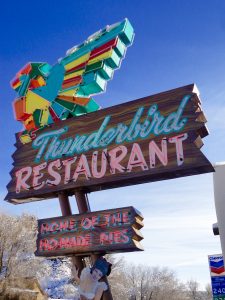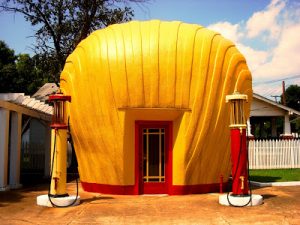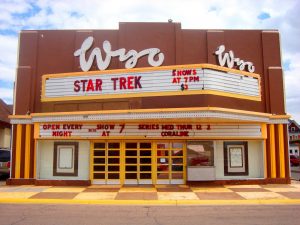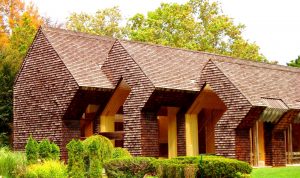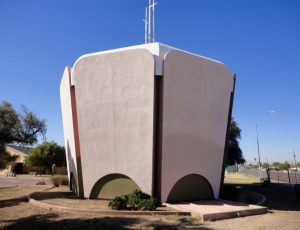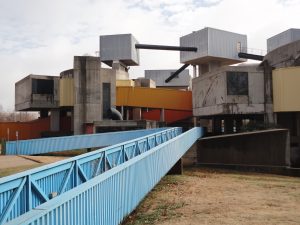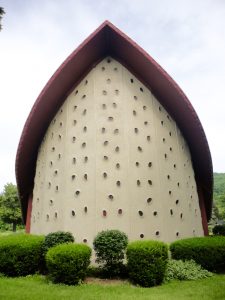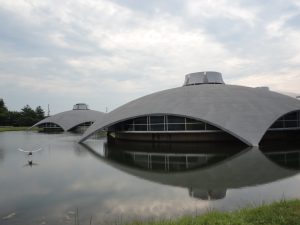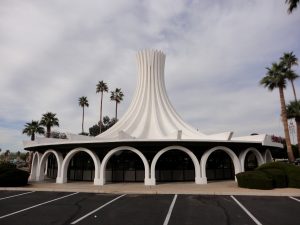DAVID CRAIG: ON “NOT LOVED” MID-CENTURY ARCHITECTURE
Elaine Sexton: One element of what makes your snap shots of vernacular architecture so appealing is your attention to the peculiar juxtapositions between the structures and how they are used. One example of this is the drive-through donut hole store, another, the pod-like high school built as a series of pods suspended over a reflecting pool in Tennessee. You are a natural documentarian. Aside from design, what triggers your interest in photographing and researching the buildings you photograph and have been posting on Facebook for the past year or so?
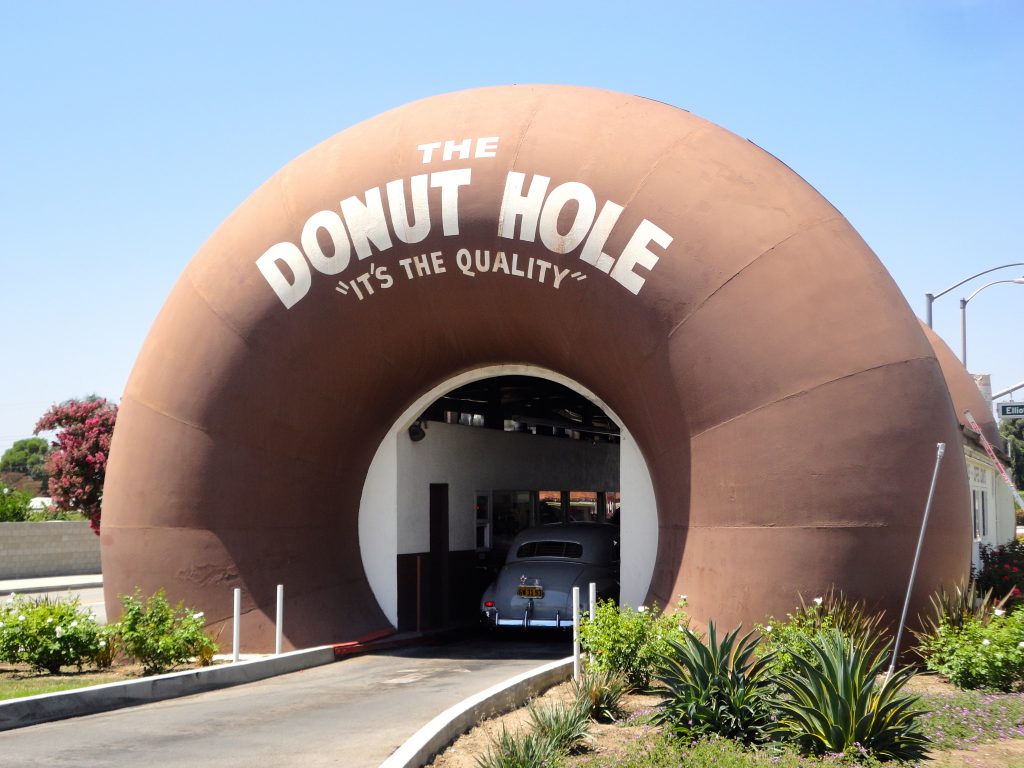
In La Puente, California, local newlyweds traditionally drive through the Donut Hole after the rites, symbolism obvious. This classic architectural “duck” was confected in 1968.
David Cobb Craig: Probably because I was born the middle of the 20th century, I am most enchanted by architecture and design from the same period and am drawn to photograph some of the oddest exemplars. Perhaps it is because I was feeling painfully odd at the time the works of architecture and design were going up, for I was growing up gay, an anomaly in landscape of north Louisiana. Doing a little research on these works of architecture, finding out a little bit about them, is like talking to the nerd in high school. I’ve always been attracted to nerds for boyfriends. A lot of the architecture I photograph is not loved and a lot of it will probably not survive too much longer, or at least not in its intended design. I like giving these buildings and signs a little love with my camera. They touch me.
- Located in Mt. Carmel, Utah, the eatery has been around since 1931.
- Of eight clamshell-shaped Shell gas stations constructed in the 1930s, only one survives: this example at Sprague and Peachtree Streets in Winston-Salem, North Carolina.
- This 803-seat theater in Laramie, Wyoming, has late Art Deco élan thanks to architect Charles D. Strong.
- For East Hampton’s Gates in the Grove, completed in 1987, architect Norman Jaffe drew inspiration from the the 18th-century wooden synagogues of Eastern Europe for a design that incorporates plain cedar shingles,Eastern Long Island’s traditional building material since the 1600s.
- Phoenix: Asbury United Methodist Church, 1967, by Mel Ensign.
- Designed by John Johansen, the Mummers Theater in Oklahoma City made its bow in 1970. Despite howls of protest from around the world, this award-winning mid-century masterpiece was pulled down in 2014 to make way for—so far, nothing.
- Located in the heart of a wine-growing region, Naples, New York, this church presents a prow pierced with small windows meant to recall grapes. The vintage of this edifice is 1966 and the designer is James Johnson.
- Constructed in pods that fairly dangle their toes in water, Montgomery Central High School in Cunningham, Tennessee, sounded its opening bell in 1970 and was designed by John Shaver.
A native of a tiny town in Louisiana, David Cobb Craig in his spare time roams the United States and Europe to experience and photograph architect and design, modern ecclesiastical spaces being a favorite. His multifarious collections include lenticular adverts, bookplates, vintage paper coasters and decades of business cards from emporia and eateries, mainly in New York City and usually extinct. A resident of Manhattan’s Upper West Side, he leads tours in Central Park that celebrate the unhailed gay people who contributed to its features. David is a lifelong philatelist and the author of First Class: The Art of Midcentury Design on U.S. Stamps, a richly illustrated book that he hopes will be published soon. A quondam staff writer and reporter for People and LIFE. Craig currently helps edit Hearst’s Food Network Magazine and its single-topic newsstand bookazines devoted to chocolate, cupcakes and other sweetmeats. For Hearst he also planned and edited House’s Beautiful Color, a hue’s hue of decorating polychromatically.


